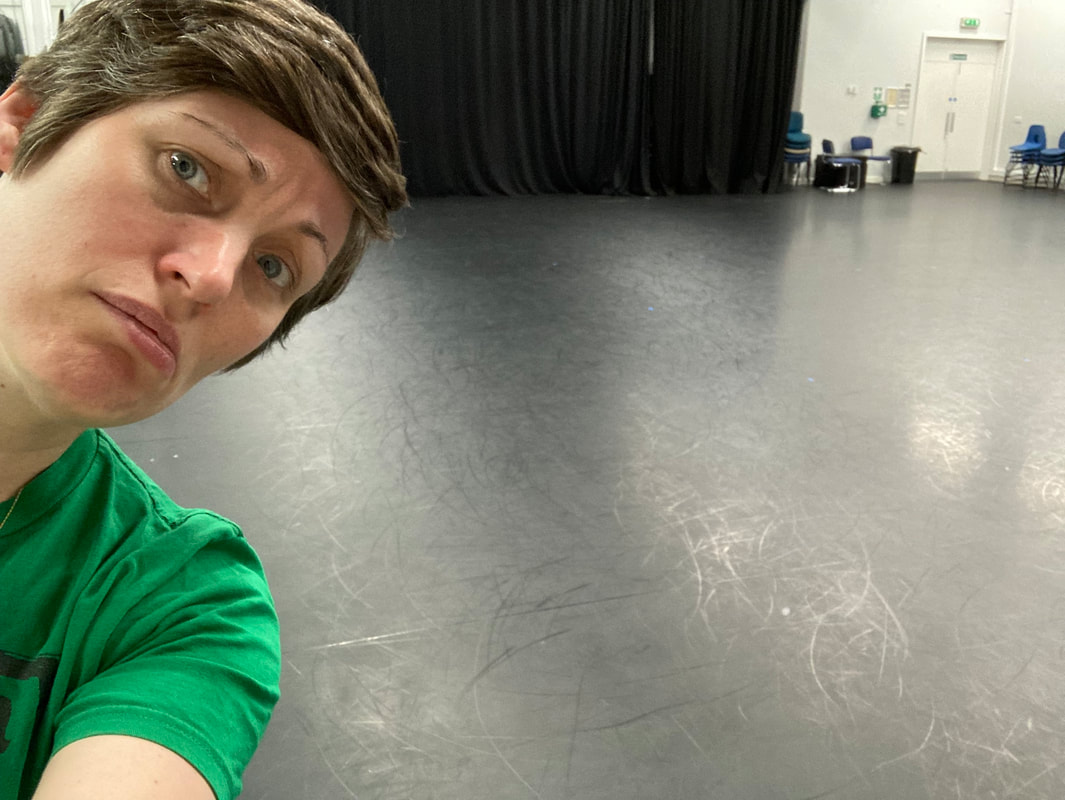|
What if failure to do something is in fact an invitation, a provocation, to do something else? In May 2022, I was due to run the first trial workshop of my practical Clowndance research. I had a lovely studio space booked at DMU on a Friday morning, and I had advertised the session to the entire dance department; undergraduates and MA students. Perhaps I didn’t pitch the session in the right way to appeal to the students. Perhaps they had a deadline looming. Whatever the reason, nobody showed up. I had been hugely looking forward to the session, to finally getting to work on some of the ideas that had been sloshing around in my brain for months with some actual dancers. Now nobody had turned up, I was worried that the practical strand of my research was doomed to failure; this had been designed as an introductory session where I could hopefully recruit participants for my longer summer course. I was disappointed, frustrated, hurt. I felt like a failure… ‘‘Here's me with ALL my workshop participants’ I wrote in a Facebook post; making a self-deprecating joke of my own failure. … and then that word started to resonate. Failure. One of clown’s most potent starting points (Davison, 2013, pp. 198–199) (Simon, 2012, pp. 65–87). What if failure to do one thing is in fact an invitation, a provocation, to do something else? I had a sudden vivid memory of one of the first clown shows I ever saw, Avner the Eccentric’s Exceptions to Gravity (Eisenberg, 2002), a show consisting almost entirely of Avner waiting for someone who doesn’t show up. A show playing with failure. Here I was, with space, music, props and a camera, and a need. A need to communicate something to the imagined students who weren’t there with me, and to others who might like to be. A need for people to come and play. I’m not a performer, but this felt like the moment to put my money where my mouth is and try some of my own ideas out. The alternative was to compound my failure to attract any students by failing to make use of the resources and time I had available to me. So this is what I did: Bibliography
Davison, J. (2013) Clown. Basingstoke: Palgrave Macmillan (Readings in Theatre Practice). Eisenberg, A. (2002) ‘Exceptions to Gravity’. London. Simon, E. (2012) The Art of Clowning: More Paths to Your Inner Clown. second edition. Basingstoke: Palgrave Macmillan.
0 Comments
Leave a Reply. |
The BlogThoughts, notes, rants and questions, written from within the clowndance research process.
Categories
All
|


 RSS Feed
RSS Feed